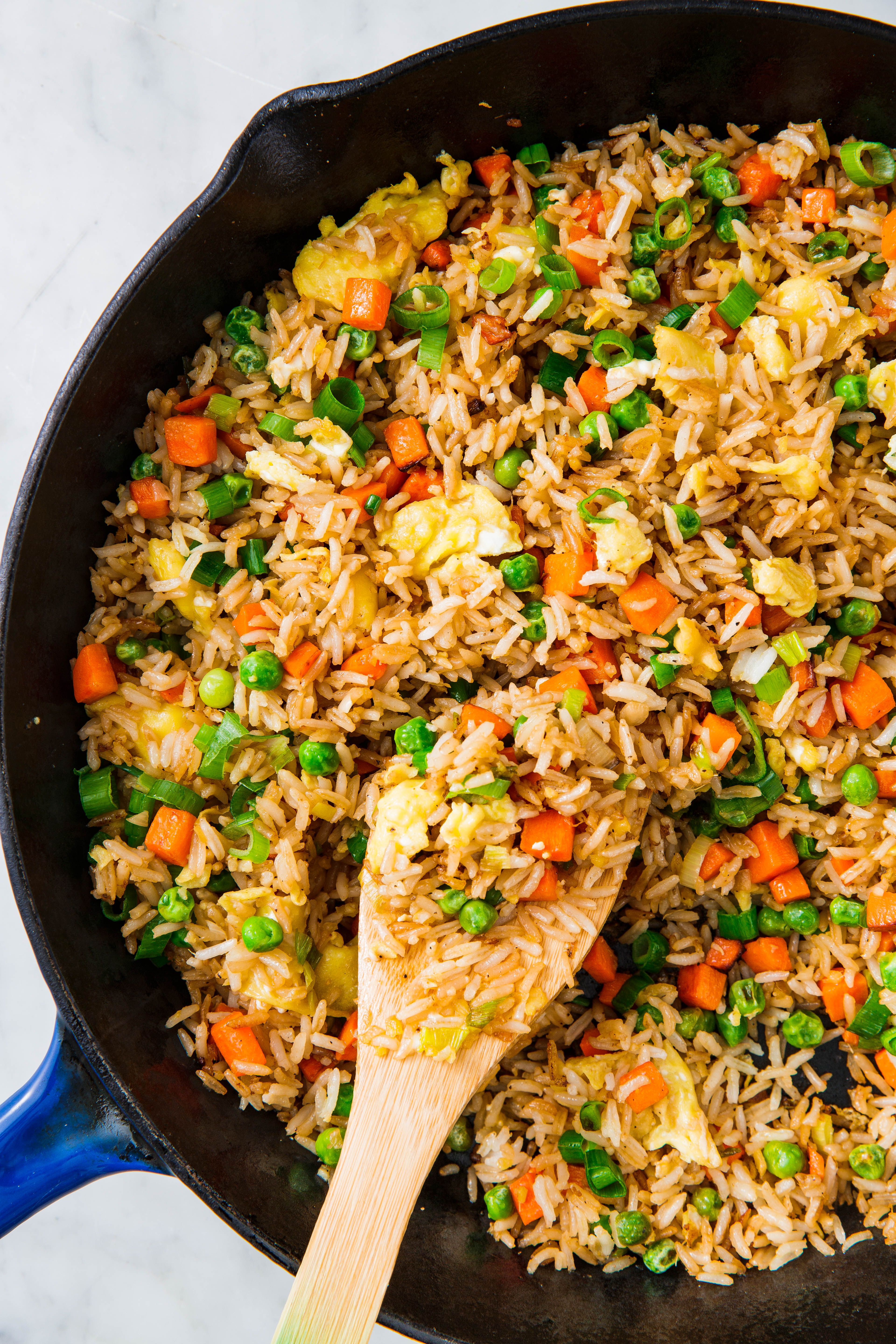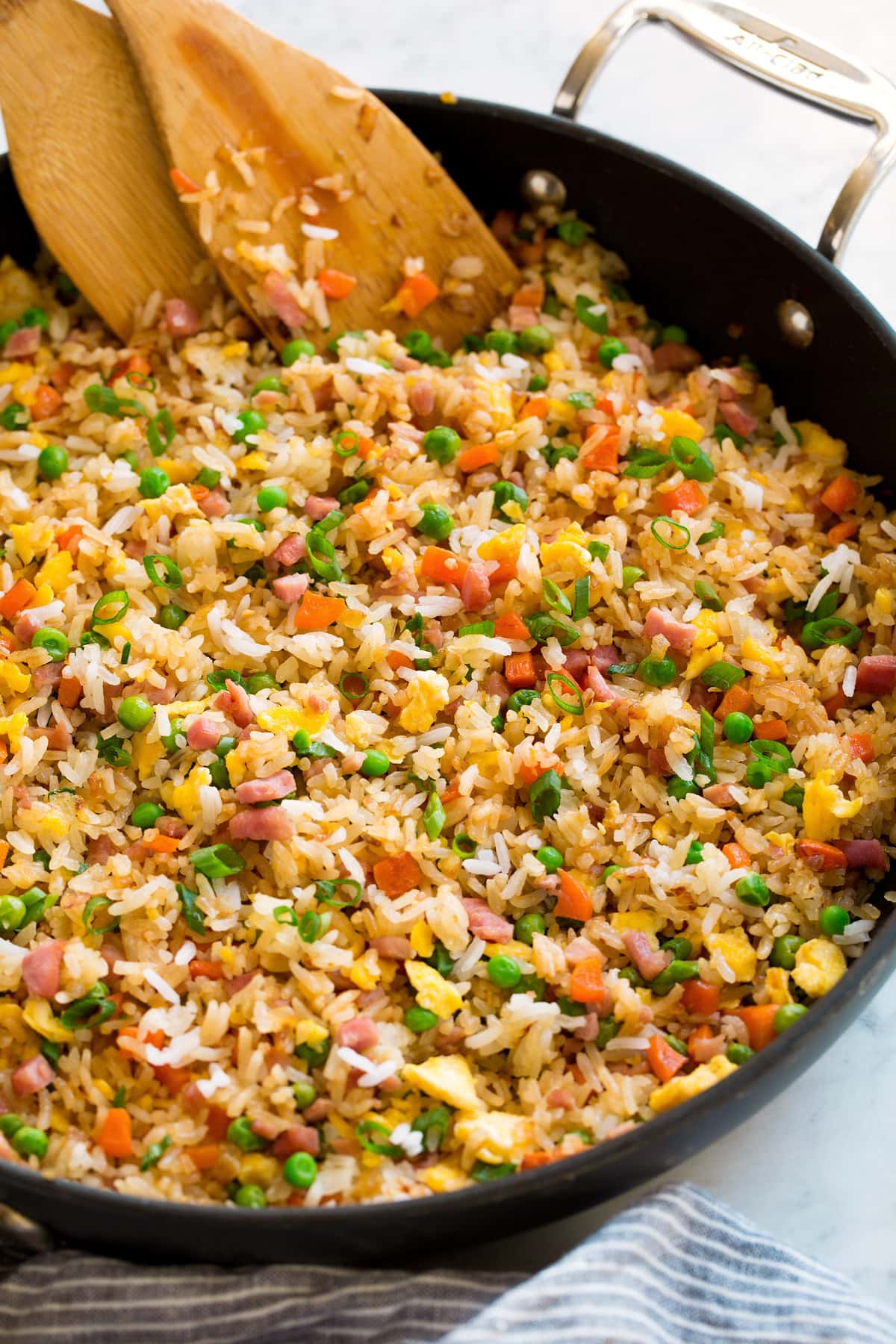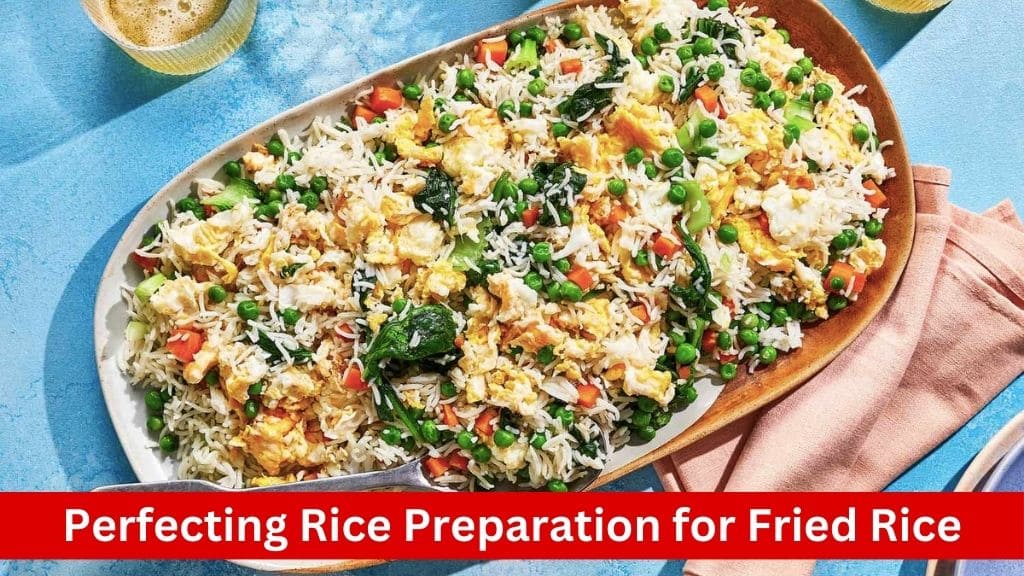Fried rice is a beloved dish enjoyed by many around the world. Its versatility, delicious flavors, and ease of preparation make it a go-to option for quick and satisfying meals. However, the key to achieving the perfect fried rice lies in the preparation of the rice itself. In this comprehensive guide, we’ll explore everything you need to know about prepping rice for fried rice, from selecting the right type of rice to the best cooking techniques.
Selecting the Right Rice

Jasmine Rice
Description: Jasmine rice, also known as Thai fragrant rice, is a long-grain variety renowned for its delicate aroma and soft, slightly sticky texture when cooked.
Advantages: Jasmine rice is an excellent choice for fried rice due to its ability to absorb flavors well and maintain a fluffy yet slightly sticky consistency. Its subtle fragrance enhances the overall aroma of the dish.
Cooking Properties: When cooked, jasmine rice retains its individual grains, making it ideal for fried rice recipes that require distinct rice grains. It cooks relatively quickly and evenly, allowing for efficient preparation of fried rice dishes.
Availability: Jasmine rice is widely available in most grocery stores and supermarkets, making it a convenient option for home cooks.
Basmati Rice
Description: Basmati rice is a long-grain rice variety known for its aromatic fragrance, slender grains, and distinct nutty flavor.
Advantages: Basmati rice yields light, fluffy, and aromatic fried rice with grains that remain separate and distinct after cooking. Its natural fragrance enhances the overall aroma and flavor profile of the dish.
Cooking Properties: Basmati rice requires slightly longer cooking times compared to other varieties, but the results are well worth the wait. It absorbs flavors beautifully and produces a satisfyingly tender yet firm texture in fried rice dishes.
Availability: Basmati rice is commonly found in specialty food stores, international markets, and online retailers, offering home cooks easy access to this premium rice variety.
Medium-Grain Rice
Description: Medium-grain rice varieties, such as Calrose or sushi rice, feature grains that are shorter and plumper compared to long-grain varieties.
Advantages: Medium-grain rice produces creamy, tender, and slightly sticky fried rice with a pleasing chewiness. Its ability to retain moisture during cooking contributes to a more cohesive and flavorful fried rice dish.
Cooking Properties: Medium-grain rice requires careful attention to cooking times and water ratios to achieve the desired texture. It absorbs liquids well, resulting in rice grains that cling together without becoming overly mushy or dry.
Availability: Medium-grain rice varieties are widely available in most grocery stores, Asian markets, and specialty food stores, offering home cooks a versatile option for preparing fried rice dishes.
Other Considerations
When selecting rice for fried rice, consider factors such as personal preference, regional culinary traditions, and the specific requirements of your recipe. Experimenting with different rice varieties can lead to exciting flavor combinations and culinary discoveries. Whether you prefer the fragrant aroma of jasmine rice, the nutty flavor of basmati rice, or the creamy texture of medium-grain rice, choosing the right rice variety is the first step towards creating delicious and satisfying fried rice dishes.
Preparing the Rice

Washing the Rice
Step 1: Measure and Rinse
- Begin by measuring the desired amount of rice for your recipe and placing it in a fine-mesh sieve or strainer.
- Rinse the rice under cold running water, gently agitating it with your fingers to remove excess starch and impurities.
Step 2: Repeat Rinse
- Continue rinsing the rice until the water runs clear, indicating that most of the excess starch has been removed.
- Properly rinsing the rice helps prevent it from becoming overly sticky and ensures that each grain cooks evenly.
Step 3: Drain Thoroughly
After rinsing, drain the rice thoroughly to remove any excess water. Allow it to sit in the sieve or strainer for a few minutes to ensure proper drainage.
Soaking the Rice (Optional)
Step 1: Transfer to a Bowl
- If desired, transfer the washed rice to a bowl and cover it with cold water.
- Soaking the rice helps to soften the grains and can improve the texture of the cooked rice, especially for certain varieties like basmati or jasmine rice.
Step 2: Soak Time
- Allow the rice to soak for 30 minutes to 1 hour, depending on the desired level of softness and texture.
- Keep in mind that soaking is optional and may not be necessary for all rice varieties or recipes.
Step 3: Drain Before Cooking
Once soaked, drain the rice thoroughly before cooking to remove excess water. This ensures that the rice cooks evenly and prevents it from becoming too mushy.
Cooking the Rice
Step 1: Water Ratio
In a saucepan or rice cooker, combine the soaked or rinsed rice with the appropriate amount of water. The ratio of rice to water may vary depending on the type of rice and cooking method.
Step 2: Bring to a Boil
Place the saucepan over medium-high heat and bring the water to a rapid boil. Stir the rice gently to prevent it from sticking to the bottom of the pan.
Step 3: Reduce Heat and Simmer
Once boiling, reduce the heat to low and cover the saucepan with a tight-fitting lid. Allow the rice to simmer gently, absorbing the water and cooking evenly.
Step 4: Steaming
After the recommended cooking time, remove the saucepan from the heat and let the rice sit, covered, for an additional 5-10 minutes. This allows the rice to steam and finish cooking, resulting in perfectly tender grains.
Step 5: Fluff with a Fork
Use a fork to fluff the cooked rice, gently separating the grains and releasing any excess steam. Fluffing the rice helps to prevent it from becoming clumpy and ensures a light, fluffy texture.
Cooling and Storing the Rice

Transfer to a Tray
Step 1: Spread Out the Rice
- Transfer the freshly cooked rice to a large baking tray or shallow container immediately after cooking.
- Spread the rice out in a thin, even layer to maximize surface area and facilitate rapid cooling.
Step 2: Allow for Air Circulation
- Ensure that there is ample space between the rice grains to allow for proper air circulation.
- Avoid stacking or overcrowding the rice, as this can trap heat and moisture, leading to uneven cooling and potential clumping.
Fluff and Cool
Step 1: Gently Fluff the Rice
- Use a fork to gently fluff the rice, separating any clumps and allowing excess steam to escape.
- Fluffing the rice helps to prevent it from becoming overly compact and ensures that each grain maintains its individual texture.
Step 2: Promote Even Cooling
- Let the rice cool at room temperature for approximately 10-15 minutes, stirring occasionally to promote even cooling.
- Stirring the rice helps to distribute heat evenly and prevents any residual steam from causing condensation, which can make the rice soggy.
Refrigerate for Later Use
Step 1: Transfer to an Airtight Container
- Once the rice has cooled to room temperature, transfer it to an airtight container or resealable plastic bag.
- Make sure the container is clean and dry to prevent any moisture from affecting the rice’s texture.
Step 2: Refrigerate the Rice
- Place the sealed container of rice in the refrigerator and allow it to chill for at least 30 minutes before using it for fried rice.
- For optimal results, refrigerate the rice overnight, as this allows the grains to firm up and develop a better texture for frying.
Step 3: Use Within 24 Hours
- Use the chilled rice within 24 hours for the best flavor and texture.
- Avoid keeping cooked rice at room temperature for extended periods, as it can increase the risk of bacterial growth and foodborne illness.
Conclusion
Properly prepping rice is the foundation for creating delicious and flavorful fried rice dishes. By selecting the right type of rice, washing, soaking (if desired), cooking, cooling, and storing it correctly, you can ensure that your fried rice turns out perfectly every time. With this comprehensive guide, you’ll be well-equipped to master the art of prepping rice for fried rice and delight your taste buds with homemade culinary creations.

